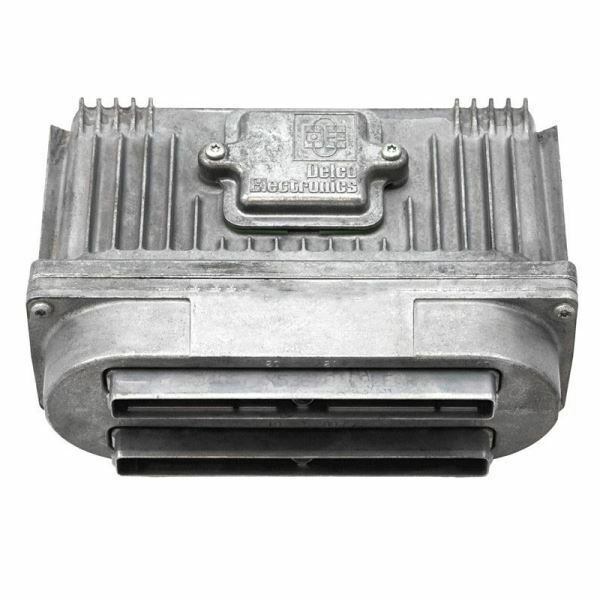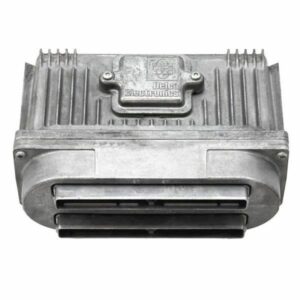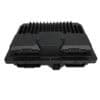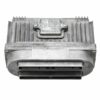Restore Peak Performance to Your 1997 GM Vehicle
Are you battling a persistent Check Engine Light, rough idling, or unpredictable stalling in your 1997 Camaro or other GM vehicle? These aren’t just annoyances; they’re classic signs of a failing Powertrain Control Module (PCM). As the brain of your engine and transmission, a faulty PCM can wreak havoc on performance, fuel economy, and reliability. I’ve seen it countless times in my 20+ years in the shop: mechanics and owners chase expensive sensor replacements when the root cause is the computer itself. This module, part number 16227797, is the definitive solution to get your car running smoothly again.
This isn’t just a replacement part; it’s a complete, ready-to-install solution. We take the hassle and expense out of the equation by pre-programming this 1997 Camaro PCM with the latest GM software updates, specifically matched to your vehicle’s VIN. No need for a costly trip to the dealership for programming. You provide your VIN, we handle the flashing, and you receive a module that’s truly plug-and-play.
Common Signs Your Powertrain Control Module is Failing
If your vehicle’s computer is on its way out, it will let you know. Here are some of the most common symptoms I’ve diagnosed that point directly to a failing PCM:
- ✔ Unexplained Check Engine Light (CEL) illumination
- ✔ Stalling, hesitation, or rough engine performance
- ✔ Poor fuel mileage
- ✔ Harsh or erratic automatic transmission shifting
- ✔ Engine cranks but refuses to start (no-start condition)
- ✔ Failed emissions test
- ✔ Communication error codes, such as P0601 (Internal Control Module Memory Check Sum Error) or P0605 (Internal Control Module Read Only Memory (ROM) Error)
A Technician’s Notebook: The Ghost Misfire
A customer brought in a ’97 Bonneville with the supercharged 3.8L, complaining of an intermittent misfire under load. They had already replaced plugs, wires, and the ignition coil pack. Scans showed random misfire counts, but no specific cylinder was at fault. After checking fuel pressure and for vacuum leaks, everything seemed fine. On a hunch, I monitored the PCM data stream during a test drive. I noticed the injector pulse width data would briefly drop out just before the misfire occurred. This pointed to an internal PCM processor fault. We installed a VIN-programmed module just like this one, and the ‘ghost’ misfire was gone for good. It’s a perfect example of how a failing 1997 Camaro PCM can mimic other, more common component failures.
Your Straightforward Installation Guide
Installing your new PCM is a manageable job for a DIY enthusiast. Following these steps ensures a smooth process. Always consult a vehicle-specific repair manual if you are unsure about any step.
- Safety First: Disconnect the negative terminal from your vehicle’s battery to prevent any electrical shorts.
- Locate the PCM: On most 1997 GM V6 models like the Camaro and Firebird, the PCM is located in the engine bay, typically on the passenger side near the fender or firewall. It’s a metal box with several large electrical connectors.
- Disconnect the Connectors: Carefully unlatch and remove all electrical harness connectors from the old PCM. These connectors often have locking tabs that need to be released. Avoid pulling on the wires themselves.
- Remove the Old Module: Unbolt the PCM from its mounting bracket. Keep the mounting hardware, as you will need it to install the new unit.
- Install the New PCM: Mount your new, pre-programmed PCM onto the bracket and secure it with the original hardware.
- Reconnect Everything: Firmly plug the electrical connectors into the new module. You should hear or feel a click as they lock into place.
- Power Up: Reconnect the negative battery terminal. Your vehicle is now ready to start with its new, correctly programmed computer. A security relearn procedure may be required on some models, which typically involves cycling the key.
Verified Vehicle Compatibility
This module is a direct replacement for part numbers 16227797 and 19109047. It is guaranteed to fit and function correctly on the following 1997 models with the specified engines:
- ✔ Bonneville: 1997 w/ 3.8L (6-231) Supercharged V6
- ✔ Camaro: 1997 w/ 3.8L (6-231) V6
- ✔ Eighty Eight: 1997 w/ 3.8L (6-231) Supercharged V6
- ✔ Firebird: 1997 w/ 3.8L (6-231) V6
- ✔ Grand Prix: 1997 w/ 3.8L (6-231) Supercharged V6
- ✔ Lumina Car: 1997 w/ 3.4L (6-207) V6
- ✔ Monte Carlo: 1997 w/ 3.4L (6-207) V6
- ✔ Park Avenue: 1997 w/ 3.8L (6-231) V6
- ✔ Regal: 1997 w/ 3.8L (6-231) Supercharged V6
- ✔ Riviera: 1997 w/ 3.8L (6-231) V6
Frequently Asked Questions About Your 1997 Camaro PCM
Why do you need my VIN?
Why do you need my VIN?
Your Vehicle Identification Number (VIN) is essential because it contains specific information about your car’s engine, transmission, and factory options. We use the VIN to flash the PCM with the exact GM-certified software for your vehicle, ensuring perfect compatibility and performance right out of the box.
Is this a plug-and-play part?
Why do you need my VIN?
Your Vehicle Identification Number (VIN) is essential because it contains specific information about your car’s engine, transmission, and factory options. We use the VIN to flash the PCM with the exact GM-certified software for your vehicle, ensuring perfect compatibility and performance right out of the box.
Will this fix my car’s specific problem?
Why do you need my VIN?
Your Vehicle Identification Number (VIN) is essential because it contains specific information about your car’s engine, transmission, and factory options. We use the VIN to flash the PCM with the exact GM-certified software for your vehicle, ensuring perfect compatibility and performance right out of the box.
Do I need to send my old PCM back?
Why do you need my VIN?
Your Vehicle Identification Number (VIN) is essential because it contains specific information about your car’s engine, transmission, and factory options. We use the VIN to flash the PCM with the exact GM-certified software for your vehicle, ensuring perfect compatibility and performance right out of the box.



